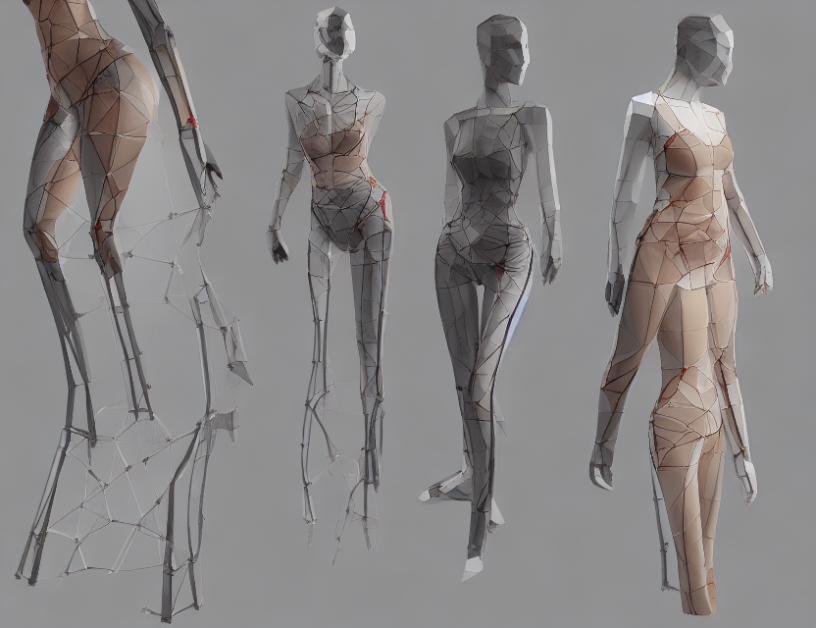In this paper, Ren Li et al. propose a novel approach to draping implicit garments over the human body using deep learning. The proposed method, called DIG (Draping Implicit Garment), uses a combination of 3D scanning and computer vision techniques to create a digital representation of a person’s body shape. This digital representation is then used as a basis for creating an implicit garment that fits the person’s body like a glove.
The authors explain that traditional methods of draping involve manual measurement and fitting, which can be time-consuming and labor-intensive. In contrast, their proposed method uses a deep neural network to learn the relationship between the 3D scanned body shape and an implicit garment. This allows for fast and accurate creation of custom-fit garments without the need for manual measurement or fitting.
To create the implicit garment, DIG first creates a mesh of the scanned body shape. This mesh is then used as input to a neural network that predicts the shape of the garment in 3D space. The predicted garment shape is then optimized using an optimization algorithm to ensure that it fits the body shape accurately.
The authors demonstrate the effectiveness of their approach by creating implicit garments for several individuals using real-world 3D scanning data. They show that the resulting garments fit the individuals’ bodies well and provide a comfortable and natural fit.
In summary, DIG is a novel approach to draping implicit garments over the human body using deep learning. The proposed method uses 3D scanning and computer vision techniques to create a digital representation of the body shape, which is then used as input to a neural network to predict the shape of the garment. This allows for fast and accurate creation of custom-fit garments without the need for manual measurement or fitting.
Computer Science, Computer Vision and Pattern Recognition
Optimizing Garment Simulation with Multiple Loss Terms: An Ablation Study



